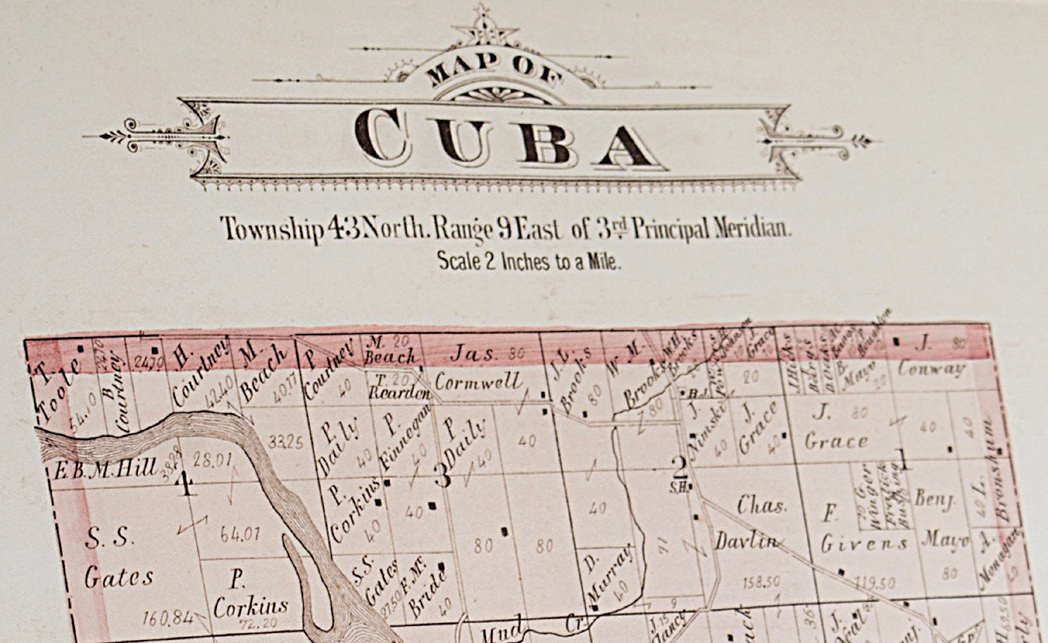
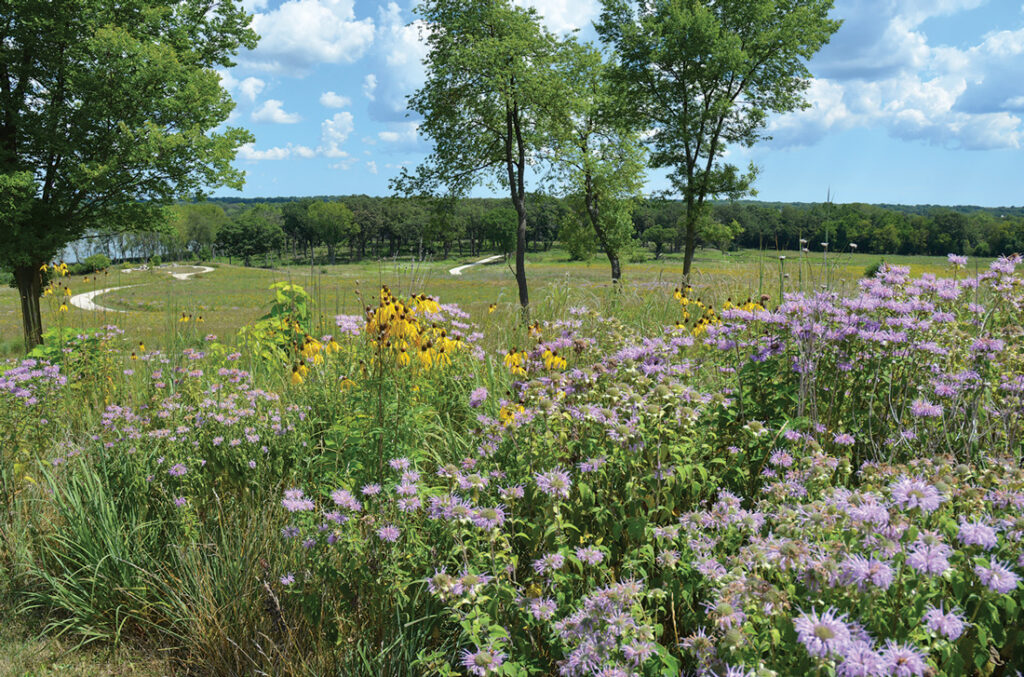
It was probably early evening on April 2, 1850, after the day’s work was done, that the families gathered at the home of Noble R. Hayes. There were only a few wagon trails then, often not more than the footpaths of the Native Americans, with the most-traveled being the Lake Zurich-to-Dundee postal route. The settlers probably walked, rode, or drove a cart. Some came from the most northerly sections of the township. As dusk fell, only lanterns or if they were lucky, a cloudless moonlit night, lit their path.
Important work was afoot. By Illinois State Law they must bring orderly government to lands which less than 20 years before had been at the edge of the wilderness. Noble R. Hayes’ house stood where Cuba Road crosses the present-day Northwest Highway. Then there was no highway, no railroad, and no Village of Barrington.
The Order of Business that evening was first to elect a Township Government. Proceedings were all faithfully recorded in the Minutes Book. Noble R. Hayes was elected the first Town Clerk, and Francis Kelsey, Overseer of the Poor. His descendants remain in Cuba Township and have intermittently served in local government.
The next Order of Business was naming the Township. Many of the voters originated from the vicinity of Troy in New York State, and that was the name most favored, with Lewis Bute designated to convey the choice to the County Board of Supervisors meeting in Waukegan.
However, Bute had a surprise. The name Troy had already been taken by a Township in Will County, Illinois, and could not be duplicated. Inspiration seems to have come in an unlikely way. At that time Americans were known to be fighting alongside insurgents against the Spanish on the Island of Cuba. This was headline news, probably discussed on the Courthouse steps and in the saloons and barbershops.
Did this influence Lewis Bute who returned home to suggest “Cuba” to his board? In “The Past and Present of Lake County” published in 1877, it was recorded that at the Town Meeting in 1851 the name was formally adopted.
Faithfully, and every year since 1850, on the second Tuesday in April, the Annual Township Meeting has signaled the continuity, stability, and neighborliness that this first form of local government offers to citizens. And let us recall in our imagination, the circumstances of that first meeting as the scattered homesteaders gathered to fulfill their civic duty, traversing the rutted wagon trails lit by lanterns or moonlight. They were ordinary citizens, part of the shaping of a country at its grassroots and reminding us that they were investing in a “Government of the People, By the People, and For the People.”
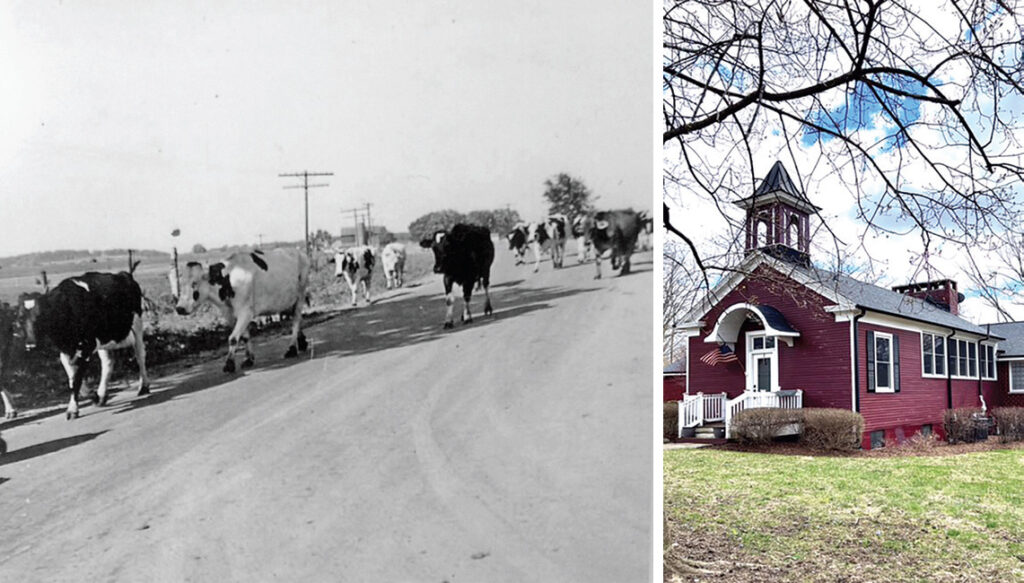
In 1831, Mrs. Juliette Magill Kinzie traveled with her husband, John Kinzie, Jr., their family, and guides on the military route from Chicago to Fort Winnebago in Wisconsin, where Kinzie was the Government Agent.
In her memoir, “Waubun: Or the Early Day in the Northwest” published in 1873, Mrs. Kinzie recalled resting for the night, in a place that was later identified as being in the southwestern corner of Lake County now Cuba Township.
“The accelerated pace of our horses as we approached a beautiful, wooded knoll warned us that this was to be our place of repose for the night. These animals seemed to know by instinct a favorable encamping ground, and this was one of the most lovely imaginable.”
“The ground around was carpeted with flowers; we could not bear to have them crushed by the felling of a tree and the pitching of our tents among them. The birds sent forth their sweetest notes in the warm lingering sunshine; and the opening buds of the young hickory and sassafras filled the air with perfume.”
In 1834, this northeastern Illinois territory was Cook County. That year Amos Flint, his father Joseph, an aunt, Grace Flint and the VH Freeman family came to rest where a swiftly flowing creek entered the Fox River. The first recorded, their name Flint remains with us today. (See sidebar.)
In 1836, McHenry County was created out of Cook and LaSalle Counties and stretched from its current western boundary across northern Illinois to Lake Michigan. By 1839, by Congressional Order Lake County was sectioned out of McHenry County, its borders being Wisconsin, Lake Michigan, McHenry County to the west, and Cook County to the south.
With townships surveyed by 1840, the Land Sales Offices opened in Chicago, and the settlers could obtain their Deeds for the claims they had staked out. By law, one-sixteenth of each Section (Section 16 on the 36-square-mile township grid) had to be given for a school. Barrington’s greatest historian Arnett C. Lines recorded those pioneer names as did early plat maps. Many were later buried in White Memorial Cemetery, among them Francis Kelsey who had arrived with members of his family in 1841.
Thomas and Olcutt White arrived in 1844 and provided the land in Section 26 where a log building was constructed at the western end of present-day White Cemetery. It was a place of worship for a Class of the Methodist Episcopal Church under the Reverend Nathan Jewett. When the Methodists built their church in the Village of Barrington in 1858, services were discontinued here. In 1855, a standard balloon frame one-room schoolhouse was built on the south side of the road.
In 1855 also, Thomas White and Innis Hollister signed the Deed that founded White Memorial Cemetery on White’s land across from the new schoolhouse.
The establishment of country schools and township government found our pioneers going about the work of building more permanent houses and cultivating their farms. Depending on where they lived in the Township, markets were in Algonquin, Dundee, Wauconda, Lake Zurich, and occasionally Chicago. Grain was an important commodity in those early days.
A surviving letter from Francis Kelsey eloquently describes those first circumstances of the pioneers. In transcription it is believed to be dated July 20, 1842.
The letter begins with a description of the travails of their journey from Shelby County in New York State that took them through Ohio, Michigan, to Chicago and then north to Janesville and finally down the Fox River to Elgin.
He then writes: “Lyman Clifford heard of my living at Elgin and thought I had better move up the river as it is very healthy, and I now live in the south part of Lake County.”
“Thought I would take a farm where plenty of them to let and then look around the country west of Chicago. For about twenty-five miles west the land is not good for winter wheat but within four or five miles of the Fox River there west, as far as I have heard the country is first right good…. but west it is further from market.”
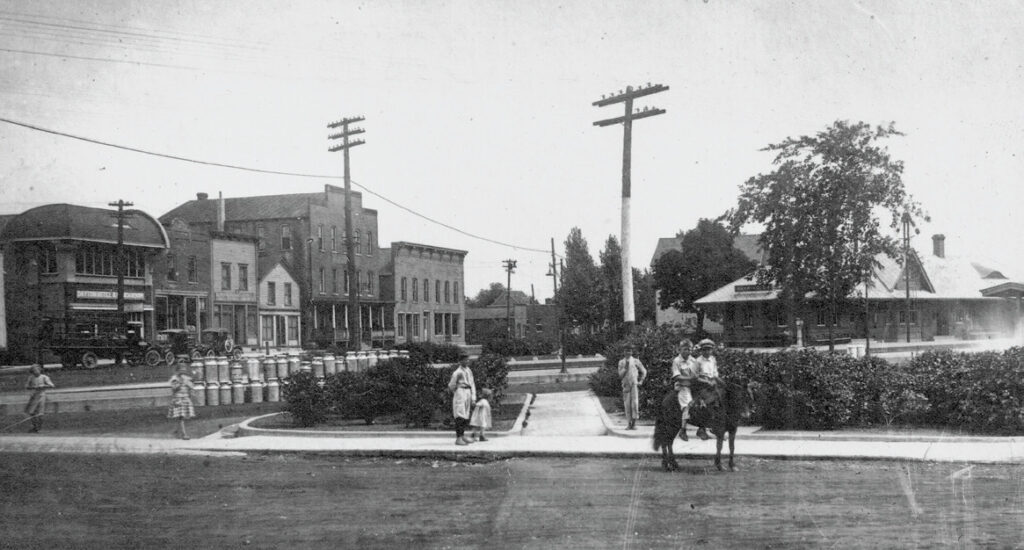
“There is land here for ten shillings an acre that will make good farms and there are other lands with improvement that can be bought very cheap. I like this country as well or better than expected. I have not purchased, and I may wait till next summer. If there is a prospect of our living … in the spring.”
“I went last week to Chicago and Sylvester Salin went with me to Chicago. I drove forty bushels of wheat and got eight four cents per bushel. It is thirty-two miles … gone one day and back the next.”
In 1854, the prospects for Cuba Township pioneers changed. The Illinois and Wisconsin Railroad, which became the Chicago and Northwestern Railway, started its expansion northwestward from Palatine.
The railroad engineers laid down their rails and came to the Lake-Cook County Line Road. There the farmer, Warren Hough, sold his 40 acres on the Cook County side to the railroad and their engineers platted the lots for sale. The depot from Deer Grove was moved along the new line on a flat car. Thus was founded the town of Barrington Station, to be Incorporated in 1865 as the Village of Barrington.
Similarly, on the Lake County, Cuba Township side, Willard Stevens platted out and sold the lots on the streets we recognize today. It was an important development for Cuba Township’s commerce and access to Chicago. Barrington Station was both a freight and passenger stop.
With the railroad extending to Fox River Grove, and Cary, about 1861 a platform was built where the track intersects Kelsey and Plum Tree Roads. The Densmore Freeman sawmill, located on Flint Creek near the present Lake Barrington Village Hall found business thriving, as they supplied sawn lumber to refuel the locomotives at the new Cuba Station, also designated Langenheim, for the German farmer who owned 95 acres in the vicinity.
The pioneering families of Cuba Township, among them Yankees, Irish, and Germans, brought with them varied backgrounds and skills to their new home; for some it was their new country. The school law of 1840 ensured that a basic education was there for their children, but it was an otherwise isolated life. The railroad was a catalyst for progress.
The Cuba platform supported the Township economy as dairy farming developed. The farmers drove their milk cans to the platform for the early morning train to Chicago and retrieved their empty cans from the evening train. They navigated rough trails in all weathers. At their peak production the farmers hauled nearly 400 eight-gallon milk cans to the Cuba platform.
Cuba Station was soon a prime location for a blacksmith shop, a saloon, and then, in 1889, a general store located where the Kelsey Roadhouse is now. Conrad Krause was the owner. From 1892 until 1894, the Langenheim United States Post Office operated here.
As milk production increased, cheesemaking added to local productivity. The best known was the Fricke factory, located at the southwest corner of the present Cuba and Buckley Roads on Flint Creek.
In 1889 the factory burned and was rebuilt on the same site. Needing workers, and housing for them, the Frickes moved the Noble R. Hayes house, where that first Town Meeting was held in 1850, across the railroad tracks close to the factory and added to an existing house to offer boarding for the workers.
The Fricke Cheese Factory closed in 1910, after which it was moved and became a residence near the old Cuba platform. The worker’s house remained where it was. Today it is the offices of the Cuba Road District, a Township Historic Landmark (see photo on last page).
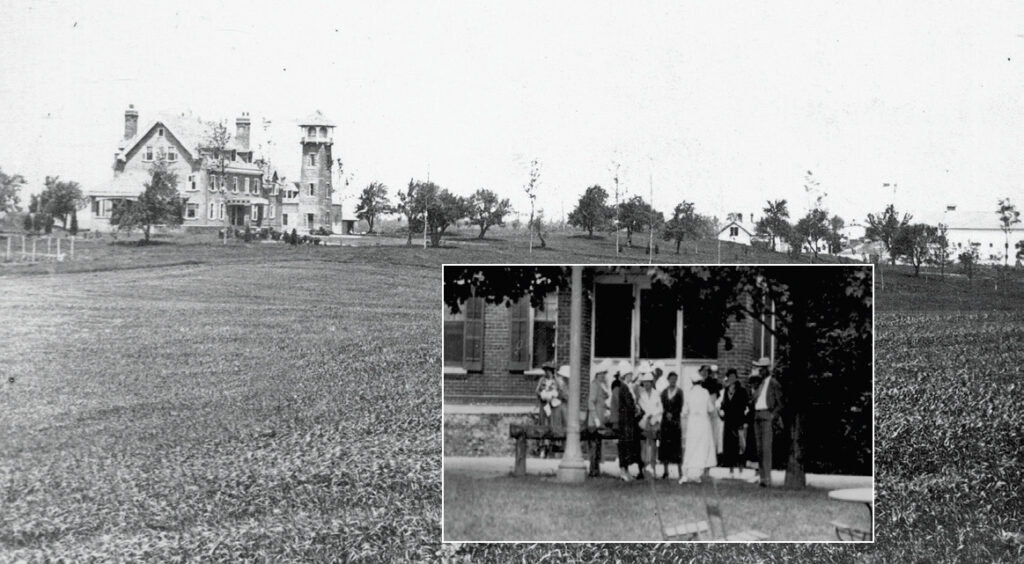
On August 27, 1947, the White School petitioned to join the newly Consolidated District #89 and the students transferred to the new North Barrington School. The old frame school, with some land around it was sold. For several years it passed through different owners.
In the 1960s, its renaissance began. Purchased by Elizabeth and Don Moelling, they began a then-innovative restoration project. The original school with its belfry was preserved fronting Cuba Road, with side and rear wings discreetly added for modern living. Its unruly reputation forgotten, the White School is an iconic landmark of Cuba history.
Early on, besides its pioneers, Cuba Township was “discovered” by some distinguished city dwellers. The full story of Mrs. and Dr. Edmund Kimberly’s purchase of 115 acres along the eastern and southern shores of Honey Lake in 1857, was told in the “Our Town North Barrington” in the July/August 2020 issue of Quintessential Barrington. Their names were registered in the “Book of Original Entry” in Chicago in 1830. Dr. Kimberly was one of five trustees elected when Chicago was incorporated in 1833, and he was a founder of Rush Medical Center. Their descendants remained a part of the Honey Lake community until after World War II.
William Sandman was a prosperous businessman in the Village of Barrington. He owned 700 acres of magnificent rolling land between Honey and Grassy Lakes. In 1907 he sold this to a Chicago builder, William Grace, with the Rock Island Railroad Station, the Cook County Building, and City Hall at Clarke and LaSalle Streets to his credit. His hill-topping mansion “Gracefields,” and adjacent water tower, was notable for its brick construction, a rarity here in those days. The Barrington Review reported in the spring of 1907 that “William Grace was out here looking over his summer place.” But life was not idyllic for Grace as financial troubles and personal scandals caught up with him. In 1925, he sold to Clifford Leonard who developed Biltmore Country Club and Estates.
A little-known right-of-way existed through Biltmore Estates for the extension of Route 59 from Route 22 to Wauconda. This right-of-way connecting Barrington directly to Wauconda was not open until 1935.
Northwest Highway to Fox River Grove had been completed adjacent to the Northwestern tracks in the mid-1920s. Transportation routes began to improve for Cuba Township.
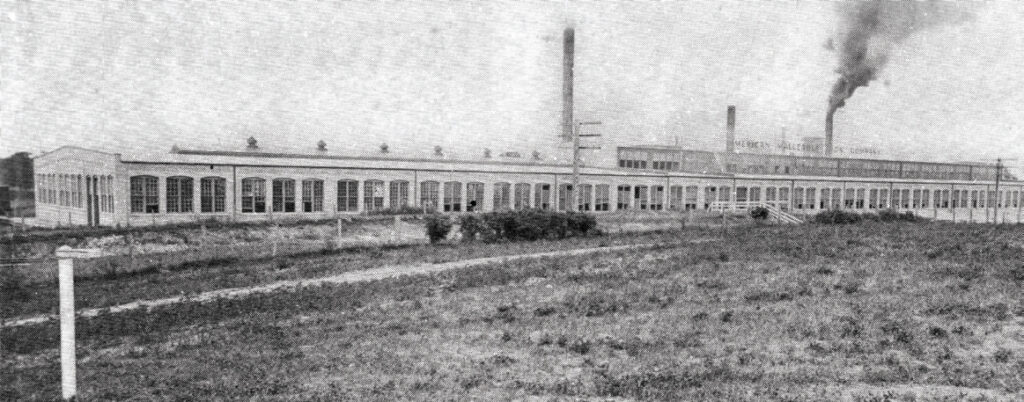
There was a failed attempt in 1900 to establish an industrial district west of the village alongside the railroad tracks. The American Malleable Iron Works sprawling factory, with its worker’s cottage district near Hart Road, went out of business by 1903 allegedly due to faulty castings. The mostly Hungarian workers who had lived in the cottages returned to Chicago, abandoning them. Some of their homes were moved into the Village and became charming residences. This chapter in Cuba history is commemorated today by a plaque at The Foundry of Barrington.
The enterprising Barrington Realtor Sanford Peck saw an opportunity as the local farming economy was changing. The Barrington Public School on Hough Street expanded into a high school. Farm work became a less desirable option for the youth of the time. The 1893 World’s Columbian Exhibition, also known as the Chicago World’s Fair, was accessible by train from Barrington and the railroads offered season tickets for multiple visits to the Fair. The Fair was a catalyst for progress in industry, agriculture, architecture, transportation, and many other fields of endeavor.
Sanford Peck’s first clients in Cuba Township in 1907 were George Van Hagen and H. Stillson Hart. Van Hagen acquired the Cady and Wiseman 300 acres, and Hart acquired the Dodge and Comstock farms totaling 500 acres. Hart streamlined the existing dairy operations and leased them to the Borden Company. Van Hagen developed a state-of-the-art dairy barn which was designed for the utmost comfort of the cows.
These two, together with Spencer Otis, Sr., who through Peck had acquired almost 2,000 acres in adjacent Cook County, joined forces to found the Barrington Hills Country Club in 1921, on land between the Van Hagen and Hart estates. Another early resident was Robert Work, the noted architect and designer for both the first and second Barrington Hills Country Clubs.
Other buyers between County Line Road, the railroad, and Ridge Road included J.R. Cardwell, B.J. Grigsby, W.J. Klingenberg of Sheridan Trust and Savings Bank (no relation to Cuba Township’s Bill Klingenberg Jr.), and Olive Beaupre Miller, publisher, editor, and author of “My Book House for Children” whose property was later acquired by James Kemper of Kemper Insurance.
As the demand grew from city folk to access country retreats, the Realtors moved northwards into the Township until, by mid-century, it was a patchwork of old timers and newcomers, like Max Hurd on his magnificent site overlooking the Fox River and the McGraw Family still with multiple acres.
Cuba Township has a wealth of natural resources in which governmental and non-governmental entities have collaborated to preserve. Here, you are never far from public open spaces to be enjoyed in all seasons. The Lake County Forest Preserve District, Citizens for Conservation, the Flint Creek Watershed Partnership, Barrington Hills Conservation Trust, and private property owners with thousands of volunteers have helped to protect the natural heritage of Cuba Township, which offers many lifestyle options in both its incorporated communities and the unincorporated ribbon which is still the Township’s domain.
Many years ago, an older resident, who was taking part in the Census data collection, attended a meeting after his rounds of hidden enclaves, slightly bemused, saying, “I didn’t know that there were still sheep in North Barrington!”
Well, maybe not sheep, but occasionally alpacas and other livestock, and above all, our native wildlife thanks to preservation efforts. If I may borrow from Citizens for Conservation’s Mission Statement—Cuba Township offers “Living Space for all Living Things.”

The words kept calling me: “Their log house had burned during the first winter, leaving them in a pitiable condition.” Somewhere here in Lake Barrington, where Flint Creek flows into the Fox River, a few brave people had settled.
There was nothing but wilderness; no one to call, no resources but their own determination and courage. Such were the circumstances when the first settlers from the East entered Cuba Township in 1834.
How to find this place? I had an idea. I called longtime Grassy Lake Forest Preserve volunteers and stewards, Carol Hogan and Wesley Wolf. They responded with enthusiasm and soon went to reconnoiter along the Flint Creek trail. Wesley had studied some aerial maps. Through the wilderness they reached the Fox River at the outlet of Flint Creek. They volunteered to take us there.
On Thursday, August 6, 2020, QB editor Lisa Stamos and I, together with Wes and Carol, stepped off the beaten path into a sea of native sedges and invasive reed canary grass. Soon, there was a dense canopy of old buckthorn, shutting out any wildflower growth, and a few deer trails. Then, the waters of the Fox glistened up ahead. We emerged to find the Fox lapping on a narrow, sandy beach. South along the beach is where Flint Creek flows into the river. We were close. Wes believes those aerial maps reveal that erosion may have submerged any remains of Amos Flint’s cabin.
Amos died about two years after arriving. He is probably buried around here. Rejoining the trail, I was glad to have saluted his spirit and those of his fellow travelers into the wilderness.

I was hearing the whispers and grumblings of Illinois politicians wanting to do away with township government well before I immersed myself as a Trustee in 2019 and then serving as the Supervisor since May 2021. I had a hunch that townships added significant value while discussing our services with various Barrington area village government officials during my tenure as a Trustee. I enthusiastically jumped at the opportunity to run for the Supervisor position and be what I consider the “front line” of government for so many of our 17,000+ neighbors residing in Cuba Township.
We are small, innovative, and flexible entities meeting the various community needs ranging from food security, utility assistance, road safety, and senior citizen transportation to advocating that residents apply or maintain appropriate property tax exemptions. Our food pantry is feeding well over 50 families per week, we locally administer federal and state assistance programs, and our world-class road maintenance crew is one of the most trusted public works entities in the region. I am very proud to lead a great team and ensure we are responsive to our residents.
We recently surveyed our residents about our services and our public interaction and achieved a net promoter score of 77, which is considered excellent. We learned our residents greatly appreciate our recycling programs and have enhanced our recycling offering to include free compost materials in time for the planting and gardening season. That was in addition to the recycling efforts we already had in place for paper, electronics, textiles, shoes, and eyeglasses.
In 2021, we introduced the Land We Love Run [5k, 10k run and 2k walk scheduled for June 29, 2025], in conjunction with the Village of Barrington Hills, to celebrate Independence Day and raise money for families of deceased military and first responders. Next year’s budget will prioritize updating our physical structures, improving our cyber infrastructure, and further enhancing our recycling capabilities. Our annual fall festival is a great way to connect with everyone and it is a bit like a community picnic, fun for people of all ages. Cuba Township has been serving the public since its founding in 1850, and we plan on preserving our history to enrich our bright future.
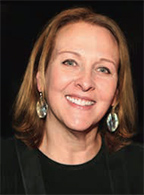 Lisa Stamos is the founder of Quintessential Media Group and the publisher of Quintessential Barrington magazine.
Lisa Stamos is the founder of Quintessential Media Group and the publisher of Quintessential Barrington magazine.
She may be reached at lisa@qbarrington.com.
Share this Story